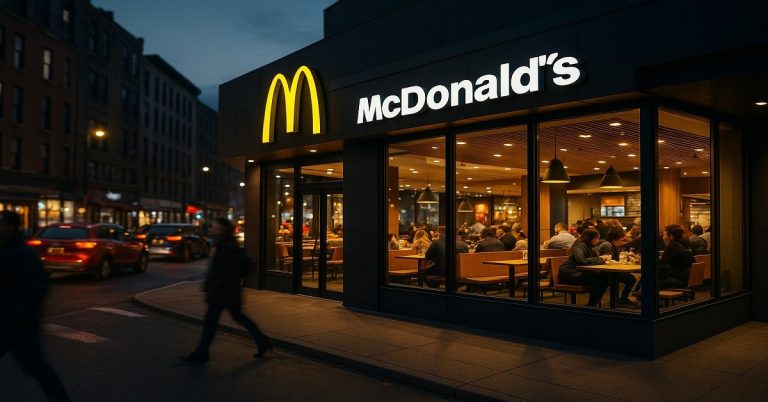Food delivery jobs in Europe have become one of the most accessible ways to earn extra income, and perhaps even one of the most adaptable.
The flexibility to set your schedule, work independently, and tap into platforms that are growing rapidly can make these roles genuinely appealing.
Let’s explore why so many people are making the move and how you can benefit too.
Why the Demand for Food Delivery Jobs Keeps Growing
The popularity of food delivery jobs has surged in recent years, and it’s not hard to see why.
As people’s lives become increasingly busy, ordering meals via apps instead of cooking has quickly become the norm in cities big and small.
It seems every week there’s a new platform or a fresh incentive for couriers.
Companies like Uber Eats, Deliveroo, Just Eat, and others are expanding, which directly translates to more opportunities for people looking to earn.
Benefits of Food Delivery Jobs in Europe
Unlike conventional part-time roles, you aren’t tied to set shifts or rigid contracts.
You choose when to log in and start delivering, which—for many—is the single biggest benefit.
Most delivery apps have accessible requirements, often needing only a basic background check and a vehicle—a bicycle, scooter, or car.
You don’t need advanced qualifications or years of experience. Honestly, for students, newcomers to a city, or anyone between jobs, it’s a practical entry point.
How Much Can You Expect to Earn in Food Delivery?
Unlike some other gig work, food delivery often adds up through multiple earning streams like base pay, tips, and bonuses.

Let’s get into the numbers—because that’s usually what people want to know first.
Average earnings for food delivery drivers in major European cities generally fall between €15 and €25 per hour, including tips and bonuses.
But, frankly, your actual income depends on various factors:
- Location: Busy city centers tend to mean more orders and less waiting time.
- Platform Used: Some apps pay more per delivery or offer better bonuses.
- Time of Day: Peak lunch, dinner, or late-night hours often bring in more money.
- Efficiency: How quickly you can deliver and get to your next order.
- Vehicle: Bikes cost nothing for fuel but move slower; scooters and cars can be faster but cost more to run.
| Platform | Average Earnings/hour (€) | Payout Frequency |
|---|---|---|
| Uber Eats | 15–25 | Instant/Weekly |
| Deliveroo | 13–23 | Weekly |
| Just Eat | 14–20 | Weekly |
| Stuart | 13–20 | Weekly |
Actual figures depend on demand and competition in your city—just something to consider.
Top Food Delivery Platforms in Europe
With so many food delivery apps to choose from, it’s worth comparing a few before you start.
- Uber Eats: Strong presence across Europe, offers instant payments, lots of orders during peak times.
- Deliveroo: Well-known in the UK, Western Europe, flexible with good peak bonuses.
- Just Eat: Great for steady work; often partners with local restaurants, popular in the UK, France, Spain, and more.
- Stuart: Focuses on urban areas, B2B, and restaurant partnership deliveries.
Most people try out more than one app (sometimes simultaneously) to compare earnings and maximize opportunities.
If you’re thinking about multi-apping, this article on maximizing gig earnings could be a useful read.
How to Start a Food Delivery Job
The requirements are refreshingly simple. Here’s what you generally need:
- Be 18+ years old (age may differ per platform and country)
- A valid driver’s license (for car/scooter; not needed for bikes in most places)
- A roadworthy vehicle (bike, scooter, or car)
- Acceptable background check and proof of right to work
- Smartphone with the delivery app installed
- Basic insurance (mandatory for motorized vehicle drivers)
Register on a Platform
Visit the platform’s official website or download their app. Typically, you’ll:
- Create an account
- Submit identification and documents
- Wait for a background check
- Complete onboarding—some platforms offer online tutorials or city-specific guidance
Get the Right Gear
Don’t underestimate the value of good equipment. Consider:
- An insulated delivery bag (sometimes provided by the platform)
- Power bank for your phone
- Weather-appropriate clothing (rain happens—you’ll want to be prepared)
- Good lock (for bike couriers)
Go Online and Start Delivering
Once approved, you can toggle online in the app and start receiving orders. I found the first few weeks a bit unpredictable.
Orders can be random; it may take a while to find your favorite areas and times.
But most drivers say things get easier—and more profitable—as you get to know your city better.
Best Times, Locations, and Vehicles for Maximum Earnings
If you’re looking to boost your hourly average, a bit of planning helps.
Lunch (11 am–2 pm) and Dinner (6 pm–9 pm): Highest demand, especially in business or residential zones
Friday/Saturday nights: Orders spike—good for tips, but busier roads
Bad weather or events: Sudden spikes, but be safe!
Choose Busy City Areas
Central zones, student areas, and districts with a high density of restaurants and apartments mean less time waiting for orders.
Of course, you’ll need to balance this with traffic, limited parking for cars, or longer rides for bikes.
Pick a Vehicle that Suits Your Area
Bikes: Perfect for dense city centers; cheapest overall
Scooters: Balance of speed and low cost, ideal for medium distances
Cars: Best if covering suburbs or larger packages—but watch out for higher costs and traffic
How to Increase Your Food Delivery Earnings
Some apps allow you to deliver several orders in one trip—great for income and efficiency. Watch for app notifications about incentives.
Small things—like clear communication with customers or timely deliveries—can mean better tips and even repeat orders.
Note your hourly earnings and keep an eye on expenses (fuel, repairs, etc.) to choose the most profitable setup.
Sometimes, when one app goes quiet, another is buzzing. Why not both?
Legal, Insurance, and Tax Essentials
Food delivery drivers in Europe usually work as independent contractors (self-employed), so you’ll be managing your own tax affairs.
It’s worth spending an evening reading your local regulations before tax season arrives.
If you have questions, consider consulting a local accountant or this EU guide on self-employment.
Keep records of earnings, expenses, and mileage (apps like Stride or QuickBooks help). Ensure you have proper insurance for your vehicle and goods.

Best Cities in Europe for Food Delivery Work
The food delivery boom isn’t the same everywhere, and your earning potential can vary not just between countries, but from neighborhood to neighborhood.
| City | Platforms Available | Notes |
|---|---|---|
| Paris | Uber Eats, Deliveroo, Just Eat | Bustling at weekends and evenings, lots of tourists |
| Berlin | Uber Eats, Lieferando, Stuart | Steady demand, cycling-friendly |
| Amsterdam | Uber Eats, Thuisbezorgd, Deliveroo | High ratio of bike couriers, peak in tourist spots |
| Barcelona | Glovo, Uber Eats, Just Eat | Very busy in tourist seasons, excellent bonus opportunities |
If you’re thinking about relocating for better earnings, consider the cost of living and competition too.
Sometimes, moving a few kilometers from a saturated center to an up-and-coming district can be surprisingly rewarding.
Final Thoughts – Is Food Delivery Worth It?
Food delivery jobs in Europe continue to offer a practical, flexible way to earn money, whether that means funding your studies.
It’s not always easy, and there are days when orders are slow or the weather turns suddenly.
Interested in other flexible jobs? Check out our full guide on high-paying side hustles in Europe for more ideas.



